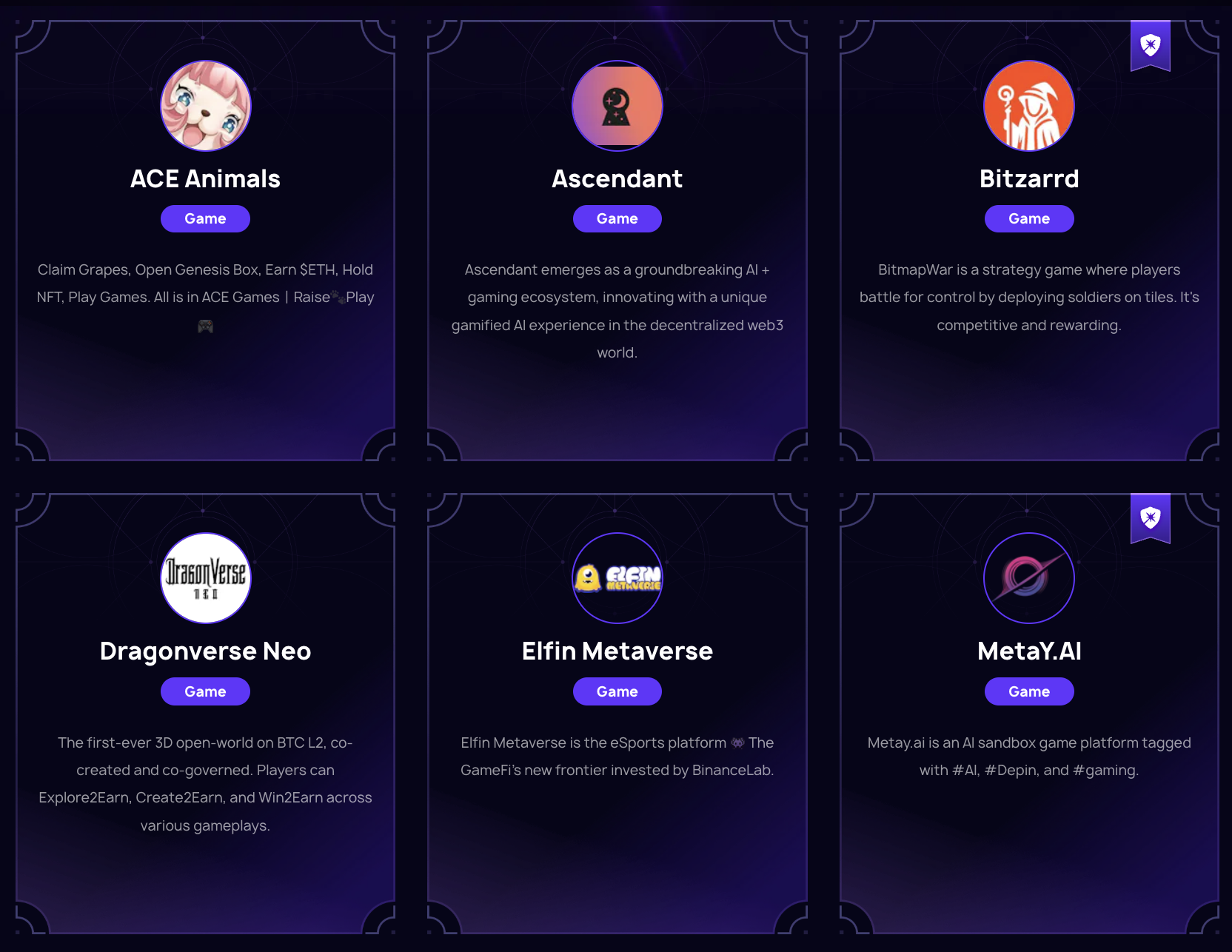Merlin Chain的開發與生態系統增長
本模塊探討了 Merlin Chain的開發與生態系統的增長,重點介紹了推動網絡擴展的戰略、合作伙伴關係以及社區舉措。
戰略合作與協作
Merlin Chain的發展得益於與區塊鏈領域關鍵參與者的戰略合作,這些合作為網絡的運營和增長提供了必要的技術基礎設施和支持。例如,Merlin Chain與知名技術提供商合作,增強數據可用性、優化 ZK-Rollup 性能,並確保與比特幣基礎層的安全集成。

這些合作關係不僅限於技術支持。通過與加密領域內的知名實體合作,Merlin Chain獲得了更廣泛的用戶基礎和更強大的開發資源。這對於建立網絡的可信度至關重要,並吸引了眾多開發者利用 Merlin 的功能進行開發。
社區驅動的開發計劃
Merlin Chain生態系統的增長與其社區驅動的開發舉措緊密相連。核心之一是 生態系統資助計劃,其中 40% 的 MERL 代幣總供應量被分配用於支持在 Merlin Chain上構建項目的開發者。該計劃資助去中心化金融(DeFi)、遊戲、社交平臺等領域的創新應用。通過提供資金和技術支持,Merlin Chain激勵開發者創建新工具和服務,從而擴展網絡的功能和覆蓋面。
Merlin Chain還通過舉辦活動、黑客馬拉松和教育計劃積極與社區互動。這些努力旨在打造一個強大的開發者社區,致力於網絡的長期成功。
多樣化的應用與用例
自主網啟動以來,Merlin Chain的應用生態系統迅速發展,已有 200 多個去中心化應用(dApp)投入運營。這些 dApp 涉及多個領域,從 DeFi 協議到遊戲和社交平臺,充分利用了 Merlin 的 Layer 2 架構提供的可擴展性和低交易成本。
去中心化金融仍然是主要焦點,許多 DeFi 項目利用 Merlin Chain進行借貸、流動性提供等活動。Merlin Chain的 EVM 兼容性進一步增強了這一點,使基於以太坊的 dApp 可以輕鬆移植到 Merlin,實現跨鏈功能,並擴展可用的金融產品種類。

Merlin Chain中的部分 DeFi 應用
在遊戲領域,Merlin Chain支持多款基於區塊鏈的遊戲,這些遊戲得益於更快的交易速度和更低的費用。許多遊戲結合了非同質化代幣(NFT)和其他數字資產,為用戶提供了新的參與和貨幣化遊戲體驗的方式。

Games in Merlin Chain
長期願景與路線圖
展望未來,開發團隊為 Merlin Chain制定了明確的路線圖,其中包括對網絡的可擴展性、安全性和功能的持續增強。路線圖還優先考慮通過新的合作伙伴關係、與其他區塊鏈網絡的集成以及引入更高級的功能(如 Layer 3 增強)來擴展生態系統。
目前的治理結構依賴於一組排序節點,但未來目標是過渡到完全去中心化的模式,讓社區擁有更多控制權。這一轉變預計將增強網絡的彈性,並進一步使其開發與去中心化原則保持一致,支持區塊鏈領域的廣泛發展。
亮點
- 戰略合作為 Merlin Chain提供了必要的技術基礎設施,並擴大了用戶基礎。
- 生態系統資助計劃 推動了社區驅動的開發,支持創新項目。
- 應用生態系統包含 200 多個 dApp,涵蓋 DeFi、遊戲和社交平臺。
- 路線圖包括可擴展性、安全改進和進一步去中心化的計劃。
- Merlin Chain專注於利用比特幣的優勢,同時通過 Layer 2 技術擴展其應用場景。





